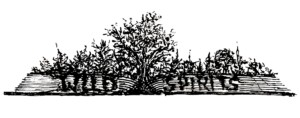Voices and Soundings
Here is a selection of oral materials, interviews and podcasts that engage with the curriculum. Some of these recordings are soundings that extend the themes and topics. They have been shared with us by a host of collaborators, partners and friends of the Wild Spirits project.
We welcome further tellings and readings in your voice. This is an ongoing project. Please email us to add your text, voice and sound material.

‘Be the Voice of’ Sound Map Commons Project, Turkey. SesOl.org on SoundCloud.
First Nation Stories with a focus on Woodland Cree.
American Indian Fairy Tales: William Trowbridge Larned (c. 1867 – 1928) and Henry R. Schoolcraft (1793 – 1864). Native Americans living in the Lake Superior region passed their cultural identity down through the generations by way of stories. Far more than mere tales to amuse children, they passed along the collective wisdom of the tribes. In the 1830s, government Indian Agent and ethnologist Henry R. Schoolcraft learned the language of these people and went out to collect and preserve their stories. Although these stories were recast as children’s fairy tales in the 1920s, they contain much of the old wisdom.
tsptekwle: Secwepemc Stories: Interactive digital stories with audio components. Stories include: Introduction to the Secwepemc Nation, The Language of the Secwepemc, Origin stories, Village Life (interactive map with phases of the moon), Archaeology stories. [You may know the Secwepemc people as the Shuswap people of British Columbia.] (Intermediate, Middle School, High School)
Louis Bird, Cree Storyteller. “Our Voices” audio recordings: “The archive of stories and interviews recorded by Louis Bird is the foundation of OurVoices.ca. In Aboriginal culture, teachings are passed from generation to generation in a rich tradition of storytelling. Louis Bird is a renowned Aboriginal scholar and storyteller. As part of OurVoices.ca and in conjunction with the Omushkego Oral History Project, Bird will share – in Cree and in English – a sampling of the stories of the Omushkegowak or “Swampy Cree” people of the Hudson and James Bay Lowlands of northern Manitoba and Ontario. Bird is from Peawanuck Ontario and has shared his stories with audiences throughout Canada, the United States, and Europe. In addition to performing traditional Cree legends, mystery stories, and oral history, Bird has devoted three decades to documenting Cree oral traditions. He began making audiotape recordings of the stories told by his elders in 1965. Today, his collection comprises more than 340 hours of material – the largest extant collection of such recordings. We are proud to be able to bring some of these recordings to OurVoices.ca.” (Intermediate, Middle School, High School)
First Nations Story Telling Online. This site includes links to videos and animated films and further sites. First Nations, Inuit, and Metis cultures have long passed on knowledge from generation to generation through oral traditions, including storytelling. Storytelling is a traditional method used to teach about cultural beliefs, values, customs, rituals, history, practices, relationships, and ways of life. First Nations storytelling is a portal for holistic learning, relationship building, and experiential learning.
Circle of Stories uses documentary film, photography, artwork and music to honor and explore Native American storytelling. Listen and learn from Native storytellers.
Our Voices, Our Stories, National Library and Archives of Canada Media Gallery. First Nations manuscript images and recordings of oral histories.
Kalapuya Creation Story. Told by Esther Stutzman, Yonkalla Kalapuya/Coos (Oregon).
Sharing Our Stories Awaye! presents six Aboriginal dreaming stories. These stories are told to children to teach them about their ancestors, the spirit world and their place in that world. These six stories from Northern Australia tell of creatures such as mermaids, devil-devils, whistle ducks and blue-tongue lizards. Each story is both sung in a song cycle and spoken by traditional storytellers and in some stories associated song cycles are shared. Listen to the stories in the audio versions and see photos of the communities and the children’s illustrations in the on-line features.
Sinixt Stories: Ancestral Roots, Cultural Seeds. Sinixt storytellers and knowledge-keepers Marilyn James and Taress Alexis take us on 22 captivating and informative journeys, each show illuminating different aspects of this ancient culture.
Storykeepers: Indigenous writers.
Pipelines Project: Amiskwaciwâskahikan.
Kateryna Barnes, Unsettling Colonial Mapping: Sonic-Spatial Representations of ᐊᒥᐢᑲᐧᒋᐋᐧᐢᑲᐦᐃᑲᐣ
Digital Storytelling, Edmonton Public Library: Stanford Storytelling Project.